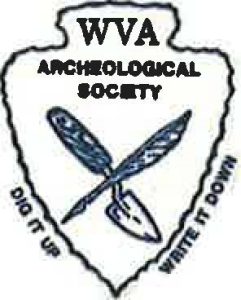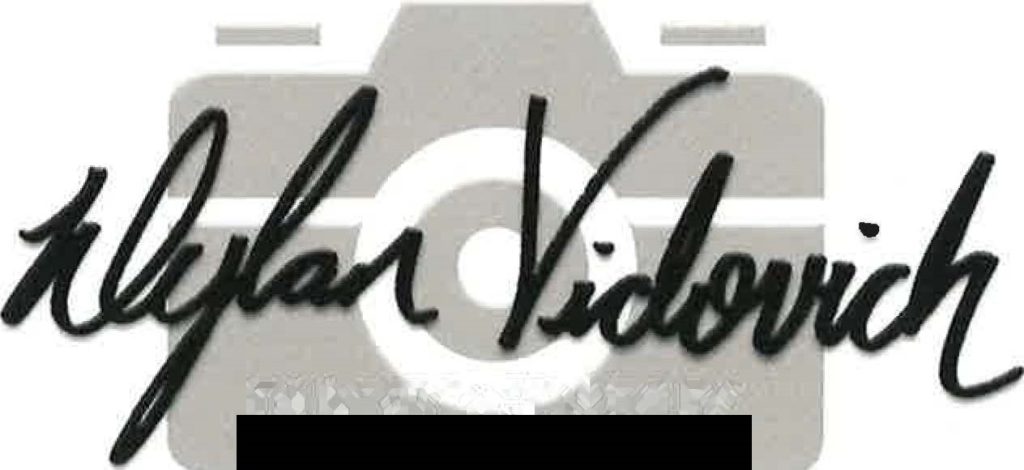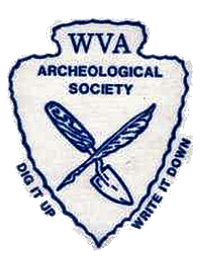West Virginia Humanities Council American Rescue Plan Grant to the West Virginia Archeological Society

Ensuring Safe Public Access to the Snidow Site Artifacts
Introduction
Welcome to the West Virginia Archeological Society’s (WV AS) gallery of Native American artifact photographs from the Snidow archeological site ( 46MC 1 ), which is located in southern West Virginia Until recently, the risk of catching Covid-19 discouraged senior citizens and others from traveling to see these artifacts on display in the confines of a museum. To overcome this problem, in 2021, the West Virginia Humanities Council awarded the WV AS a $9,485.60 American Rescue Plan grant to make professional digital photographs of the Snidow artifacts and post them on the internet. The public can now safely view these artifacts at both the WV AS website (www.wvarch.org) and Facebook page.
Acknowledgements
The WV AS is a 50l(c)(3) organization that was chartered by the State of West Virginia in 1949 to support the ethical and scientific investigation of the State’s archeology. The WV AS wishes to thank the West Virginia Humanities Council for awarding it this grant. It especially appreciates the support Erin Riebe provided throughout the project. The WV AS also recognizes the countless hours its Vice President Craig Ferre11 and Dylan Vidovich of Dylan Vidovich Photography spent taking the photographs. Last but not least, the Society wishes to thank Sean O’Kelly of XAPP Design, Inc. for his expertise organizing and posting the 300 plus photographs on the WV AS website www.wvarch.or and Facebook page.
Previous Archeological Research
According to Eugene Jones, an esteemed archeologist and instructor at Concord College, the first archeological investigation of the Snidow site was done by Father Clifford Lewis of Wheeling Jesuit College in the spring of 1965 (Jones 1989, “Shawnee Lake-Its Archeology Thru 1988”).
That summer West Virginia State Archeologist Dr. Edward McMichael’s limited excavations on a BJuestone River terrace found what appeared to be a Fort Ancient village. In 1975 Eugene Jones did additional testing that showed that the village had a palisade and encircled a 305 foot by 225 foot area. In 1987 and 1988 Marshall University field schools under the direction of Dr. Nicholas Freidin and Virginia State Archeologist Howard MacCord opened up a larger area and verified the presence of a medium-sized palisaded and nucleated Fort Ancient village on the terrace.
In 1987, during the first Marshall University field school, the landowner bulldozed a 40 foot wide by 450 foot long by 4 foot deep cut on the Bluestone River :floodplain below the viUage to construct a “mud bog drag strip.” The bulldozing exposed deep and dense deposits that included burials, storage pits, hearths, fire pits, post molds and other features dating to the Late Prehistoric to Contact periods. In 1988 Eugene Jones invited then-University of North Carolina doctoral student David Fuerst to observe the Marshall University excavations and survey the damage the bulldozing had done to the Late Prehistoric and Contact period archeological deposits on the floodplain below the viUage. He also tinned over to Fuerst artifacts he and his students collected from what he referred to as the Sand Dragstrip area of the Snidow site (46MC1-3).
In 1989 the emergency archeological investigation Fuerst conducted there revealed important information about the Native American people who lived in western Virginia during the late 16111 to early I 7th century. With support from Concord College and a local travel group, he and his two person team mapped the features on the floor and wall of the bulldozer cut and recovered late Fort Ancient mussel she11-tempered, Radford limestone-tempered, and what it defined as Crab Orchard snail shell-tempered pottery. The investigation also recovered triangular arrowpoints, notched spear points, endscrapers and other chipped stone tools, a stone celt, a sandstone mortar, hammerstones, abrading stones, cut bone and shell disk beads, marginella and olivella shell beads, tubular bone beads, a bone beamer, an antler cleaver, deer, turkey, turtle, elk, bear, and wolf bone, and carbonized nutshell, com cobs, com kernels, and other plant remains. Fine sieve water screening of the feature fill also recovered European glass beads and brass, copper, and iron artifacts, which indicated that Snidow is the earliest contact period site in southern West Virginia and one that was contemporaneous with other Contact period sites in the upper Roanoke, upper Holston, and lower New River drainages of western Virginia (Fuerst 1992, 1996, 2001, 2004, 2006, 2011).
Project Summary and Future Research
The WV AS project produced over 300 high resolution digital images of the Snidow archeological site’s Late Prehistoric and Contact period artifacts. Each image is listed on a spreadsheet with a caption that identifies the artifact’s provenience on the site. The images are also grouped into artifact classes to instruct the public about their significance and suggest different ways to research in the future. The research is hamstrung by the fact that historical accounts about the Native Americans and Euro-Americans who lived in or traveled through the lower New River region are unfortunately sketchy at best. Consequently, more work needs to be done establishing the connection between the pottery types, glass beads, and brass and copper artifacts from the Snidow site and historic groups like the Tutelo, Saponi and the enigmatic Saltmaker and Moneton Indians. More work also needs to be done studying the devastating impact European diseases had on the Contact period Native American populations who lived in southern West Virginia during the late 16th and 17’h centuries. All the artifacts, field notes, and digital photography from the 1989 investigation of the Snidow site will be donated to the Grave Creek Mound Archaeological Complex, the WV AS’s long-time partner, in Moundsville, West Virginia.
Authorized and Unauthorized Use of Digital Photographs
All the Snidow site artifacts that were digitally photographed for this project are part of the David N. Fuerst Collection and are protected under the West Virginia Archeological Society’s copyright. In no instances are they authorized to be used for commercial purposes. They are also not authorized to be used in advertisements or publications without the permission of the WV AS and its President, David N. Fuerst. The WV AS will pursue penalties upon persons who use them in an unauthorized manner in accordance with copyright laws. Contact the WV AS in writing or by email if you have any questions about these restrictions.
David N. Fuerst, President
West Virginia Archeological Society
POBOX3831
Charleston, WV 25338
(304)256-6361
dnfuerst@suddenlink.net


